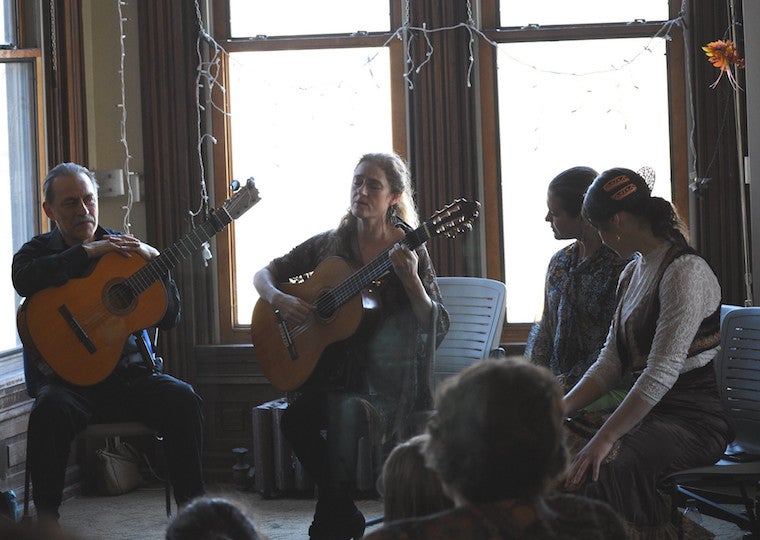Campus News
Flamenco and the Jewish Influence
February 28, 2020
Yvonne Gay
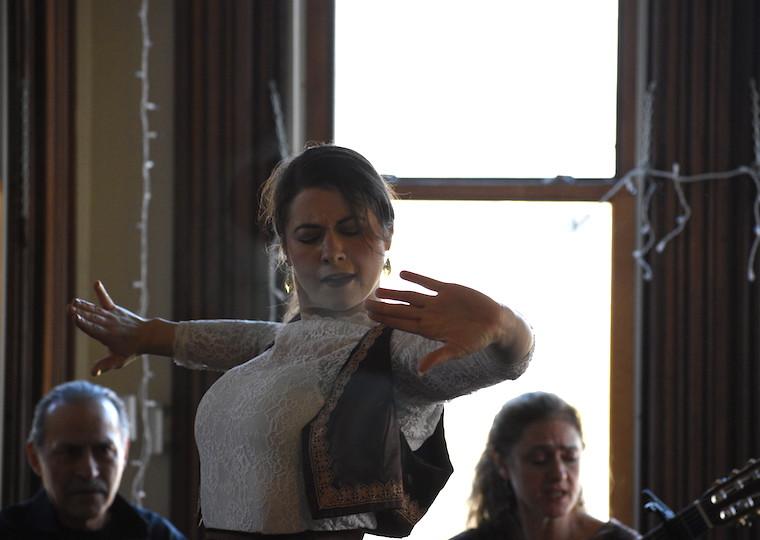
Alice Blumenfeld, visiting assistant professor of dance, performs in Hebrew Heritage House.
Photo credit: Lucie Maria Weismueller
Alice Blumenfeld, visiting assistant professor of dance, held great intensity atop a black portable platform in the lounge of Hebrew Heritage House while her expressive arms and hands interpreted the Ladino music being played by members of Abrepaso Flamenco, the professor’s own company. Judeo-Spanish—also known as Ladino— mixes 16th-century Spanish, Hebrew, Turkish, and other languages.
“I love the connection between the music and the dance,” says Blumenfeld. “There is so much depth to flamenco’s musicality, which opens up incredible potential in the movement and how to interpret the music as a dancer. Because it's an evolving language/art, a dancer has the freedom to create their own style within flamenco and tell unique stories through the music and dance.’’
Blumenfeld’s love for flamenco was recently recognized with an Individual Excellence Award from the Ohio Arts Council for two recent bodies of work: an evening-length piece for her company that premiered in 2018 at the National Hispanic Cultural Center, and Labyrinths, that uses space and the body as a canvas for metaphors. This piece also was performed in the college’s Mudd Learning Center.
“I was curious about the Jewish connection in flamenco because of my own Jewish heritage,” says Blumenfled of her presentation in Hebrew Heritage House. “A few years ago, I spent some time trying to research the connections, but again, what I found was a lot of theories and myths, and very little hard or tangible evidence to draw those connections.
“The Jewish influence on flamenco has many theories, but when it comes to evidence to back it up, the connections can be tenuous,” continues Blumenfeld. Many Jewish people remained in Spain after Ferdinand and Isabel took power, and they converted to Catholicisim. It’s thought that some of the flamenco rhythms come more directly from Jewish religious songs, including the petenera, and the Catholic tradition of singing saetas during Holy Week. The conversos are thought to have intermingled with other marginalized groups, such as the gitanos (Spanish Roma), another group who greatly influenced flamenco. There are a handful of flamenco verses [that sing] about Jewish people and their persecution within Spain.”
Photo Gallery
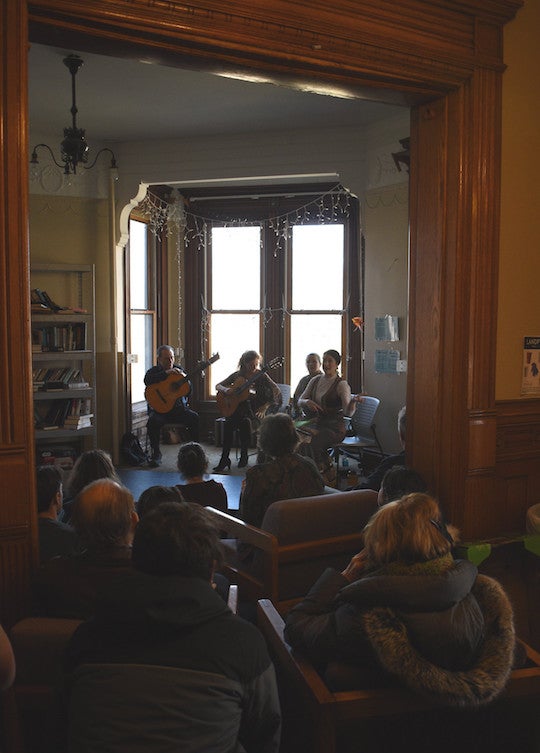
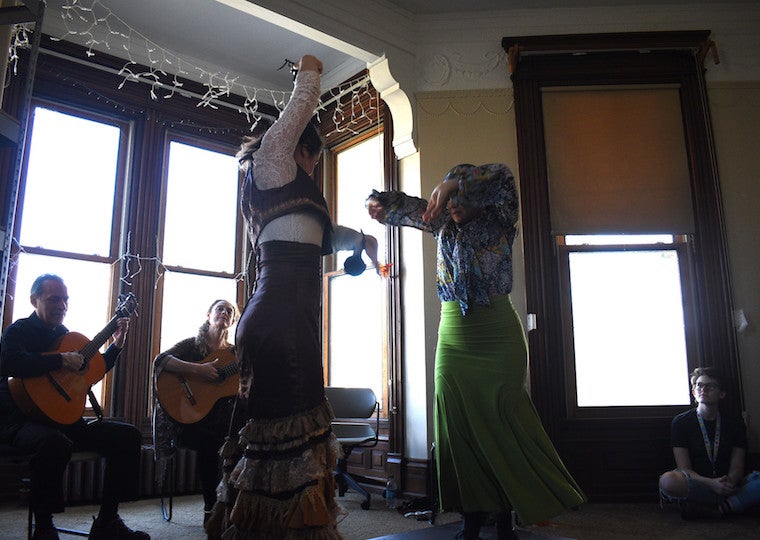
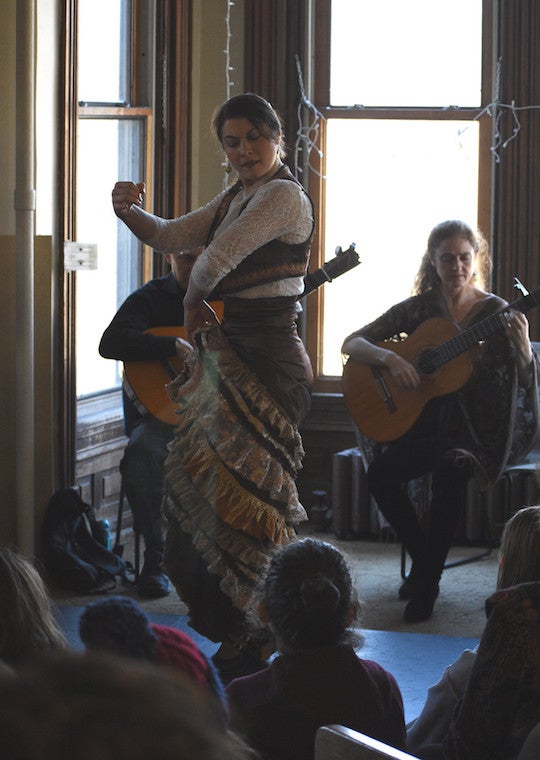
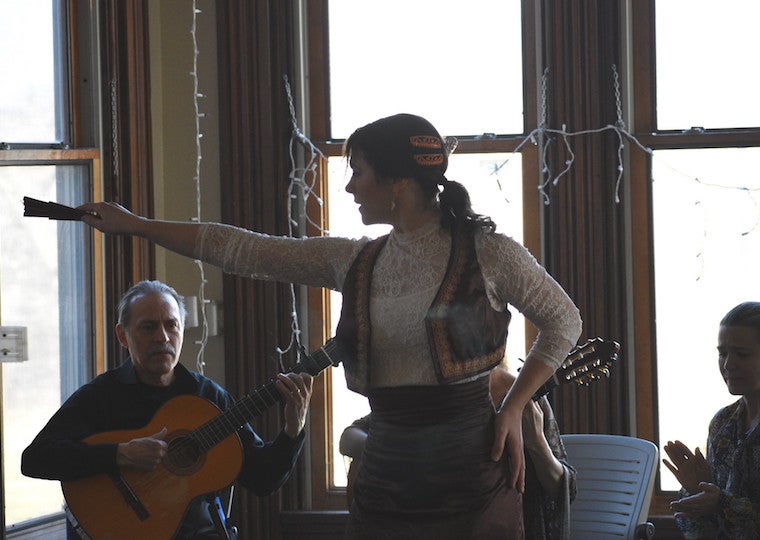
You may also like…
This Week in Photos: Perfectly Pitched
Students in the Class of 2022 walk down a shaded pathway that joins a large tent nestled in a backyard on Forest Street. They will soon be welcomed by their host, President Carmen Twillie Ambar, into a spring day senior garden party.
This Week in Photos: Hello Spring!
It’s a warm day in Wilder Bowl and the Oberlin community is making the most of it. Some have chosen to spend the day with friends, study, or just have fun like these two handstanding students who also serve as inspiration for this week’s photo series
This Week in Photos: Rhythm
The artistic display of dance, poetry, and music that students brought to the stage in Finney Chapel marked the return of a cherished Oberlin tradition—Colors of Rhythm. The annual talent showcase highlights the work of students of color, and serves as inspiration for this week’s photo series.
